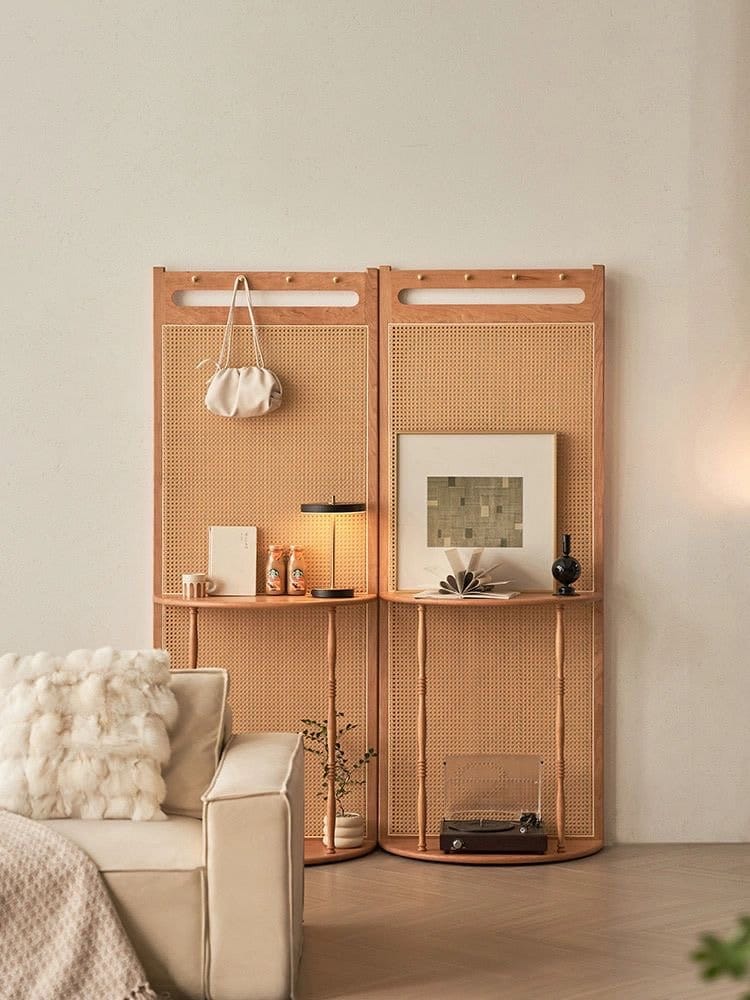The Allure of Mid‑Century Modern Design
Mid-century modern design isn’t just a nostalgic trend—it’s a movement that reshaped interiors with its focus on clean lines, natural materials, and a connection to the outdoors. Originating in the 1940s–60s, this style still dominates today’s design world with its timeless sophistication and adaptability.
Among its signature features is the mid-century modern panel, a design element used in room dividers, wall art, shelving, and architectural features. These panels blend form and function, adding visual rhythm to interiors while maintaining airflow, light flow, and spatial flexibility.
So, what exactly is a mid-century modern panel—and how can you use one today?
What Is a Mid‑Century Modern Panel?
A mid-century modern panel is typically a wall or room divider featuring repeating patterns, natural materials like wood or cane, and geometric or organic shapes. It reflects the era’s commitment to minimalism and detail.
Core traits of these panels include:
-
Linear symmetry or iconic geometric repetition
-
Materials like teak, walnut, rattan, or cane webbing
-
Use as decorative accents, dividers, or functional space partitions
-
Floating or framed construction to balance openness and structure
One beautiful example of this style is the mid-century modern wood cane panel by Pamper Haus Design Shop, which pairs natural rattan with walnut-toned wood, offering a timeless look suitable for both vintage and modern homes.
A Brief History of Mid‑Century Panels
Post-WWII optimism and architectural evolution birthed mid-century modern design. Open-plan homes needed visual segmentation without closing off space—leading to the rise of light, airy room dividers and sculptural wall panels.
These panels were used:
-
In Eichler homes as decorative privacy screens
-
In offices to break up large rooms
-
As headboards, entryway backdrops, or window accents
Architects like Frank Lloyd Wright and furniture designers such as Charles and Ray Eames embraced this aesthetic, blending natural materials with functional craftsmanship.
Why Mid-Century Panels Still Work Today
Mid-century panels have enjoyed a modern resurgence for several reasons:
-
They add depth to minimalist or modern interiors
-
They complement mixed styles, including Japandi, boho, and Scandinavian
-
They provide privacy in open spaces like lofts or studios
-
They’re sustainable, with many crafted from renewable materials like rattan or responsibly sourced wood
Plus, panels like those from Pamper Haus Design Shop are custom-made and timeless enough to blend into both new builds and historic renovations.
How to Style a Mid‑Century Modern Panel Today
Here’s how to incorporate one into your space:
1. As a Room Divider
Separate your living and dining area with a vertical wood cane panel. This adds both texture and flow without feeling closed off.
2. Behind the Bed or Sofa
Use a framed panel as a wall-mounted statement piece behind your bed or sofa. The symmetrical grain and open weave offer subtle drama.
3. Entryway Accent
Place a freestanding panel near your entry for a sense of privacy and a welcoming first impression.
4. Floating Shelf Backdrop
Install a panel behind floating wood shelves to add interest, especially in kitchens or open-concept areas.
5. Combine with Plants and Earthy Tones
Mid-century panels pair beautifully with houseplants, pottery, and brass or matte black accents. The earthy textures soften modern interiors and warm up cooler palettes.
Material Matters: Why Cane & Wood Dominate the Look
Mid-century panels often feature rattan cane webbing for a reason—it’s lightweight, breathable, and sustainable. When paired with walnut or oak frames, the contrast of texture and color defines mid-century charm.
The Pamper Haus cane panel is an excellent example of this. It’s using authentic cane and features clean walnut framing, making it ideal for interiors inspired by both vintage and modern aesthetics.
Benefits of Choosing a Custom Panel
Choosing a custom piece offers several key benefits:
|
Advantage |
Why It Matters |
|
Tailored size |
Fit your space perfectly—no trimming or adjusting required |
|
Personalized finishes |
Match your existing wood tones or wall color |
|
Artisan craftsmanship |
Higher durability and design integrity than mass-produced panels |
|
Global shipping |
Easily accessible, no matter where you live |
Custom orders from brands like Pamper Haus typically ship in 7–8 weeks and include options for add-ons like wall mounting kits or modular configurations.
Why This Timeless Design Still Inspires
So, what is a mid-century modern panel? It’s more than décor—it’s design heritage, adapted for today’s homes. These panels create atmosphere, define space, and elevate interiors without clutter.
Whether you're updating a loft, revamping a reading nook, or dividing a studio, a mid-century panel adds both personality and practicality.
To explore a beautiful, example, check out this mid-century wood cane panel or browse more designs at the full Pamper Haus Design Shop.
FAQs About Mid-Century Modern Panels
1. What materials are best for mid-century panels?
Wood and cane are the most authentic and visually rich. Walnut and oak are popular frame choices.
2. Are mid-century panels suitable for modern homes?
Yes! They complement modern, Japandi, minimalist, and even industrial interiors.
3. Can I use these panels in rentals or apartments?
Freestanding or wall-mounted versions are ideal for renters—no major alterations needed.
5. Do they provide full privacy?
Panels offer partial visual privacy—ideal for dividing spaces without full walls.





Leave a comment